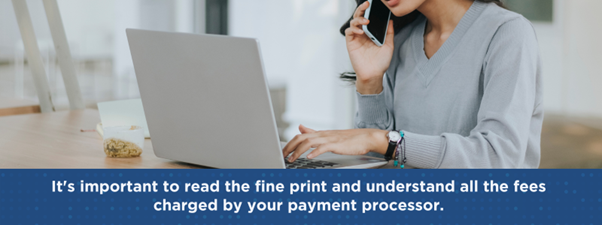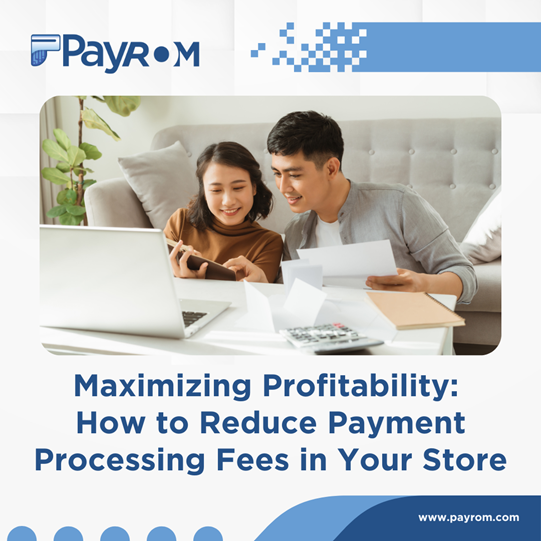Maximizing Profitability: How to Reduce Payment Processing Fees
Merchant payment processing fees are charges merchants pay to process electronic payments, typically in their online stores.
These fees usually cost between 1.5% and 4% of the total payment amount. They may also include a nominal flat fee, although this can vary depending on the service provider and type of transaction. However, while this is a small percentage of each transaction, these fees can add up quickly and significantly impact your bottom line, especially if you do a high volume of sales.
Consider that, according to the National Retail Federation, merchant payment processing fees are the largest expense after wages for businesses, totaling a whopping $138 billion in 2022 alone.
That’s why it’s important to reduce these fees as much as possible.
That said, merchant payment processing fees are unavoidable. So, as with groceries, you want to get the best deal for your money and keep costs as low as possible.
But how can you do this? We’ll take a deep dive into two tips to help you reduce your payment processing fees and keep more of your hard-earned cash.
Here’s what you’ll learn:
- The three components of payment processing fees
- How to negotiate with your payment processor
- How to avoid unnecessary fees
1 – Negotiate With Your Payment Processor
Did you know you can negotiate a better deal on merchant payment processing fees?
Well, merchant payment processing fees are a fact of life for any business that wants to accept electronic payments from customers. However, just because they’re unavoidable doesn’t mean you have to accept the fees your payment processor charges.
So, how can you negotiate a better deal with your payment processor?
The first step is to understand what you’re paying for.
Components of Merchant Payment Processing Fees:
- Firstly, interchange fees are the largest portion of credit card processing fees and are paid to card-issuing banks. In other words, your processor doesn’t receive any revenue from them. These fees are determined by the banks and take into account various factors such as processing method, card type, and business type.
Interchange fees typically consist of a percentage and a transaction fee. For example, a Visa interchange fee for a swiped consumer credit card might be 1.51% plus $0.10.
Visa and Mastercard publish their interchange tables, but Discover and American Express do not. Check out Visa and Mastercard’s interchange tables.
- Secondly, assessment fees are charges imposed by Visa, Mastercard, and Discover on every transaction using their cards.
These assessments are standardized across all credit card processors and cannot be negotiated for a lower rate. Each card brand has several of these assessments, and the prices change regularly (learn more about them).
- Lastly, processor markup fees: The markup covers costs and profits for all entities involved in processing transactions, including acquiring banks, processors, and software providers, and can vary greatly among processors.
This is why it’s important to have expert guidance when it comes to choosing a processing solution as the differences between pricing models can affect costs.
The only area where credit card processing fees can be reduced is in the markup over interchange and assessments. Interchange and assessment fees are non-negotiable as they’re set by card brands and acquiring banks and are the same for every processor.
Taken together, these non-negotiable fees are called the wholesale or base cost. What you pay your credit card processor is a combination of these base costs and the markup, and it’s technically known as a merchant discount.
Base costs should make up the largest portion of your total merchant payment processing fees, about 75% to 80%, while the markup should make up the rest—about 20% to 25%.
However, you might find that you’re paying a lot more for the markup. In some cases, you might be paying as much markup as the base costs. It’s in cases like these that there’s plenty of room for negotiation.
Armed with this information, it’s time to shop around. Not all merchant payment processors charge the same fees, so it’s important to compare offers from multiple providers. You can start by researching online, or you can get quotes from local providers.
Comparing Offers is About More Than The Percentage Rate
Don’t just look at the percentage rate. Take into account the flat fee and other charges, such as:
- Monthly fees: Payment processors charge monthly maintenance fees (often ranging between $5 and $25 per month) to cover the costs of maintaining and supporting their platform. This can include account management, customer support, and reporting.
They’re usually non-negotiable and can’t be waived, as they are an essential part of the payment processing service.
- Chargeback fees: Chargeback fees are imposed by payment processors in the event of a chargeback, which occurs when a customer disputes a transaction and requests a refund.
Generally, these fees range between $20 and $100 per transaction and are always negotiable. Payment processors can’t waive chargeback fees as they’re meant to cover the costs of handling chargebacks (such as investigation, processing, and potential legal expenses).
- Early termination fees: If a merchant decides to cancel their account before the end of their contract, a payment processor might charge them an early termination fee (ETF).
ETF can cost merchants the average processing fees that would have been earned up to the end of the contract. This can amount to tens of thousands, resulting in massive losses.
Therefore, read your contract with the payment processor very carefully to ensure they don’t have such exorbitant fees.
Some processors such as Total-Apps, however, don’t charge an ETF.
Prepare to Negotiate
Once you have a good understanding of the market and what’s available, it’s time to negotiate with your current merchant payment processor.
Start by explaining why you’re looking for a better deal.
Maybe you’ve found a lower rate from another provider, or perhaps you’re experiencing a decline in sales and need to reduce costs.
Whatever your reasons, be honest and direct.
Most merchant payment processor fees are negotiable, especially if you’re a long-time customer. Still, if they’re not willing to budge, consider switching to another provider. These days, many providers don’t charge setup fees, making the switching process relatively easy.
Ensure your new processor allows a simple application programming interface (API) integration, which enables you to keep your company’s technological infrastructure the same.
By switching to a less expensive provider, you could gain substantial cost savings as even a small reduction in fees can have a significant impact on your bottom line.
In conclusion, reducing merchant payment processing fees is not only possible but necessary if you want to keep your business profitable.
Don’t just accept the fees your payment processor is offering. Negotiate for a better deal. Shop around, compare offers, and be willing to switch providers if necessary. Your P&L will thank you.
2 – Avoid Unnecessary Fees
Chiefly, one of the best ways to reduce your payment processing costs is to watch out for unnecessary fees. Some payment processing providers charge extra fees that are hidden in fine print.
One example is a monthly maintenance fee, charged by some payment processors for using their services. A lot of times it is called a monthly statement fee, stating that it’s the cost of the bill being sent out. To avoid this fee, find a payment processor that offers a no-monthly fee option.
Some other extra fees incurred include the minimum fee, which is the minimum amount that a processor will collect in processing fees each month.
If you don’t process enough transactions to meet or exceed this minimum requirement, the processor will tack on an extra charge to meet the minimum.
Examples of Hidden Fees in a Typical Month
For instance, say your processor charges a $25 minimum. Basically, this means that the minimum they will collect in total processing fees monthly is $25.
Say, in a given month, you processed $2500, resulting in $16.67 in payment processing fees. To meet the $25 minimum, your processor will charge you an extra $8.33 out of pocket to make up the $25 minimum.
But if you processed $7000, resulting in $46.67 in payment processing fees, there will be no additional charge because the actual charge of $46.67 is greater than the $25 monthly minimum.
Another extra fee processors charge is the authorization fee. This is a transaction charge for when a customer authorizes a payment on their card before actually paying for it.
For instance, a customer booking a hotel room gives their payment information to hold a room, but payment will only be processed at the end of their stay. The initial fee charged on the card is the authorization fee.
Consequently, seemingly innocuous fees like these can add up quickly and eat away at your bottom line.
Remember, you must pay a transaction fee of about $0.25 for every transaction, or as negotiated with your processor. These extra hidden fees are over and above the transaction fees you must pay.
The table below outlines some common hidden fees that payment processors charge and how much they cost on average.
| Hidden Fees | Average Cost |
| Chargeback fee | $20–$100 per chargeback |
| PCI compliance fee | $9.95 per month |
| Monthly minimum fee | $29.95 per month |
| Sales transaction fee | $25.00 |
| Regulatory bundle | $4.95 |
| Authorization fee | $0.10 |
| Monthly online access fee | $9.95 |
In sum, it’s important to read the fine print and understand all the fees charged by your payment processor. If you can’t avoid these fees, ask if they can be waived or reduced. And if that too fails, consider switching to a different provider.
Expert Tip: If you’re a seasonal business and won’t be working for a few months, putting your account on a seasonal hold can help you avoid paying any charges.
Ready to Reduce Payment Processing Fees in Your Store?
Reducing payment processing fees is crucial for maximizing profitability in your store. As a result, researching and comparing options is key to finding the best fit for your business.
Searching for the perfect merchant account and payment processing provider for your business? Or do you want to switch providers?
Check out Total-Apps. Some of the many benefits we offer include:
- Instant approval when you apply for a merchant account
- Integration with over 100 shopping carts and customer relationship management (CRMs)
- Recurring billing for subscription plans and businesses with regular billing cycles
- Dedicated account manager with live customer and technical support
- Industry-leading fraud detection and chargeback management
- Quick and easy split payments
Contact us at +1-833-633-9127 to learn more.
Share on Facebook:





